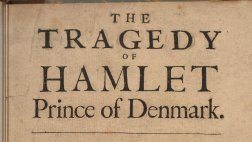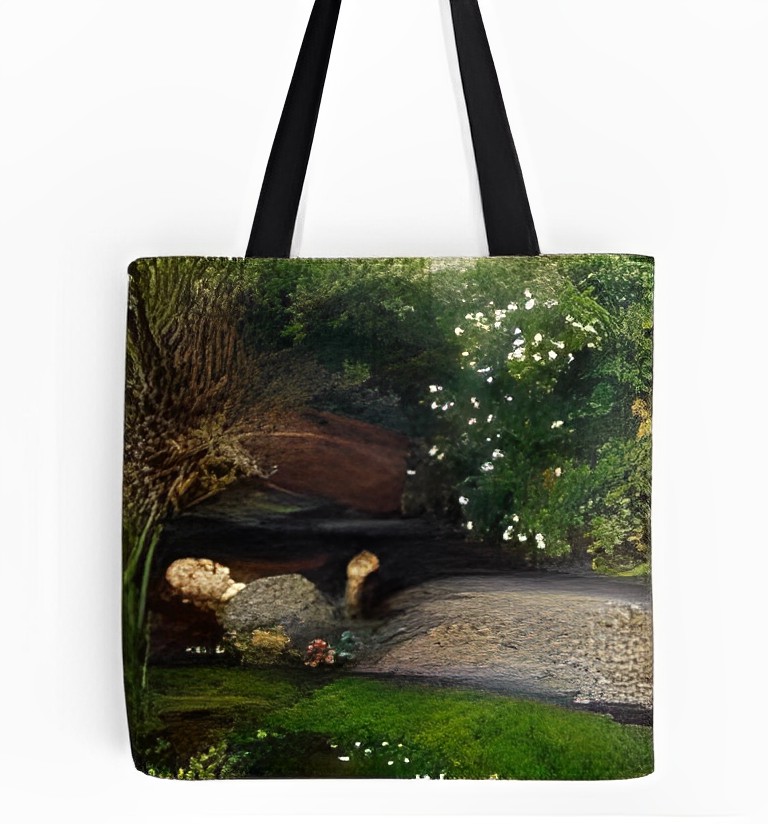 CHECK OUT YOUR FREE
CHECK OUT YOUR FREE
SAMPLE ESSAY BELOW

Check out your free
sample essay below

Essay introduction /
Thesis statement
“I cannot choose but weep”
Ophelia in Hamlet does not share the leading role occupied by the female title characters in other Shakespearean dramas such as Romeo and Juliet and Anthony and Cleopatra.
But her character illustrates one of the play’s central themes: the collapse of sanity that results from living in a maddening world of deception and betrayal.
Ophelia’s submission to her manipulative father Polonius, who in turns serves the corrupt King Claudius, in the end crushes her sanity (“a document in madness”, 4.7) and leaves her with only one route of escape: death.
Over time, Ophelia has become an iconic representation of every powerless and voiceless young woman who is divided between her true self and the role she has been forced to play in order to conform to social expectations.
SHARE THE SHAKESPEARE
In #Hamlet, #Ophelia is manipulated by everyone around her for their own selfish purposes.
1
Ophelia: sister and daughter
“A green girl”
The Ophelia we first meet in 1.3 has not yet had her spirit crushed by the world of Elsinore. In her conversation with a Paris-bound Laertes, her responses of “Do you doubt that?” and “No more but so?” suggest agreement with her brother’s warnings about Prince Hamlet.
Yet her words also display a certain amusement at her brother’s sermonizing and a worldly awareness of male hypocrisy. She gently implores him not emulate those “ungracious pastors” who neglect to practice what they preach.
It is with the arrival of Polonius that Ophelia’s manner descends into submissiveness. After dismissing Ophelia as “a green girl” and instructing her never again to speak with the prince, she responds with meek compliance: “I shall obey, my lord.”
SHARE THE SHAKESPEARE
Ophelia’s teasing wordplay with Laertes in 1.3 echoes the pun-loving eloquence of Prince #Hamlet.
2
Ophelia: seductress and spy
“Where is thy father?”
Is it only obedience to her father that motivates Ophelia to collude in the “’twere by accident” (3.1) scheme to “sift” (2.2) Hamlet in the so-called ‘nunnery scene’ of 3.1? Or, by encouraging the prince to recall his past love for her (“words of so sweet breath composed”), does she hope also to rekindle it?
A suspicious (“Where is thy father?”) and then hostile prince responds with an abusive and self-contradictory rant—against women, men and himself.
At the end, Ophelia is abandoned alone on stage, humiliated and holding the “remembrances” she intended to return to Hamlet. Afterward, the “of ladies most deject and wretched” Ophelia will succumb to the madness she mistakenly believed the denial of her love caused in Hamlet.
SHARE THE SHAKESPEARE
Ophelia tries and fails to trap Prince #Hamlet into revealing his past love for her.
3
Ophelia: trauma and truth-telling
“Pray you, mark”
Through fragments of traditional songs, but more vividly through the symbolic language of flowers, in 4.5 the traumatized Ophelia expresses her clear recognition of the dark truths beneath the surface of the Danish court.
Her distribution of flowers conveys very specific accusations voiced in a mood of deep grief that will shortly descend into despair and apparent “self-slaughter” (1.2).
So often dismissed by others, Ophelia now dismisses the king’s suggestion that her grief arises solely from Polonius’ death. Through the ballad of a naive girl who is seduced by the promise of marriage only to be abandoned because she is no longer a virgin, Ophelia conveys the maddening contradictions of her situation and impossibility of anything but failure: “I cannot choose but weep” (4.7).
SHARE THE SHAKESPEARE
In #Hamlet, everyone to whom Ophelia hands out flowers, including herself, will shortly die.
4
Ophelia’s death: accident, suicide, murder?
“Fell into the weeping brook”
Although her final act takes place offstage, the image of a drowning Ophelia ranks alongside Hamlet’s graveside cherishing of Yorick’s skull as one of the play’s most enduring and iconic images.
As poetically recounted to Claudius and Laertes by Queen Gertrude in 4.7, she created a crown of flowers and weeds and climbed a riverside willow, a tree associated with unrequited love.
She then fell into the water when the branch broke, floated for a while as she sung songs, and finally sank under the weight of her clothes (“her garments, heavy with their drink”) to a “muddy death.”
SHARE THE SHAKESPEARE
The passivity that characterized #Ophelia's life becomes in part the cause of her despairing death.
5
Essay conclusion / Summary
“A living monument”
Ophelia’s death combines elements of an accident and suicide. Hence her burial in a church graveyard but without the full rites granted to “peace-parted souls” (5.1). Ending her life was only power left to Ophelia, her only escape from the control of others. In a way, her “self-slaughter” and “melt(ing) into a dew” (1.2) is Ophelia’s revenge.
Her death also leads to Hamlet’s, for it is at her grave that the prince challenges Laertes: “I will fight … upon this theme” (5.1). But in so doing, she also helps the prince achieve his goal of removing Claudius without himself becoming tainted by the motive of private vengeance.
Horatio’s summary account to Fortinbras makes no mention of Ophelia. But she is present in the story that Shakespeare tells. It is her “living monument” (5.1).
SHARE THE SHAKESPEARE
In #Hamlet, Ophelia's "self-slaughter" is her revenge against the Elsinore that silenced her.
6
The most helpful book ever for students and teachers of Shakespeare’s Hamlet.
42 x 1,500-word model essays

Chapter-by-chapter guide to Hamlet Model Essays
IN THIS BOOK ARE THREE 1,500-WORD SAMPLE ESSAYS ON EACH ONE OF THE FOLLOWING 14 CHARACTERS, RELATIONSHIPS, AND THEMES. THAT’S 42 SAMPLE ESSAYS IN TOTAL.

#1: The Character of Hamlet
Born a prince, parented by a jester, haunted by a ghost, destined to be killed for killing a king, and remembered as the title character of a play he did not want to be in. If at the cost of his life, Hamlet does in the end “win at the odds.”

#2: The Character of Claudius
His “ambition” for Denmark’s crown leads him to commit one murder only to find that he must plot a second to cover up the first. When this plan fails, his next scheme leads to the death of the woman he loves followed by his own.

#3: The Character of Gertrude
“Have you eyes?”, Prince Hamlet demands of his mother. Gertrude‘s “o’erhasty marriage” dooms her life and the lives of everyone around her when her wished-for, happy-ever-after fairytale ends in a bloodbath.

#4: The Character of Ophelia
As she struggles to respond to the self-serving purposes of others, Ophelia’s sanity collapses in Elsinore’s “unweeded garden” of falsity and betrayal. Her “self-slaughter” is her revenge for her silencing and humiliation.

#5: Relationship of Hamlet and the Ghost
Hamlet grants the Ghost the atonement his suffering soul needed more than the revenge he demanded: he surrenders Denmark to the son of the man murdered by his father on the day of the prince’s birth.

#6: Relationship of Hamlet and Claudius
Uncle and nephew are two men at war with each other—and themselves. Claudius is haunted by the murder he has committed (“O heavy burden!”); Hamlet by the one he hasn’t yet (“Am I a coward?”).

#7: Relationship of Hamlet and Gertrude
A haunted-by-the-past Hamlet seeks the truth about his father’s death (“Do you see nothing there?”). A live-in-the-present Gertrude seeks to protect her second husband and crown (“No, nothing but ourselves”).

#8: Relationship of Hamlet and Ophelia
Their relationship begins in uncertainty, descends into mutual deceit and rejection, and ends with their double surrender to death: Ophelia, to the water; Hamlet, to Claudius’ rigged fencing duel.

#9: Relationship of Hamlet and Horatio
“Those friends thou hast … Grapple them unto thy soul with hoops of steel.” Horatio is Hamlet’s trusted confidant in life and vows to remain the keeper of his memory after the prince’s death.

#10: Relationship of Claudius and Gertrude
A marriage of mutual self-interest: Claudius wanted to become king; Gertrude wanted to remain queen. In the end, both die by the same poison her second husband used to murder her first.

#11: Main Themes of Hamlet
A king murdered, an inheritance stolen, a family divided: Elsinore’s older generation destroys its younger when two brothers—one living, one undead—battle in a “cursed spite” over a crown and a queen.

#12: The Theme of Revenge
Hamlet and Laertes journey from revenge, through obsession and anger, to forgiveness. And the revenge sought by the Ghost on King Claudius becomes the revenge of Old King Fortinbras on Old King Hamlet.

#13: Deception and Appearance versus Reality
“Who’s there?” The characters struggle to distinguish between truth and falsehood in a play-long triple pun on the verb ‘to act’: to take action, to behave deceitfully, and to perform in theater.

#14: The Theme of Madness
“Your noble son is mad”, Polonius tells Denmark’s king and queen. But is Hamlet ever really insane? If not, why is he pretending to be? And is the prince’s “antic disposition” the cause of Ophelia’s traumatic breakdown?
















